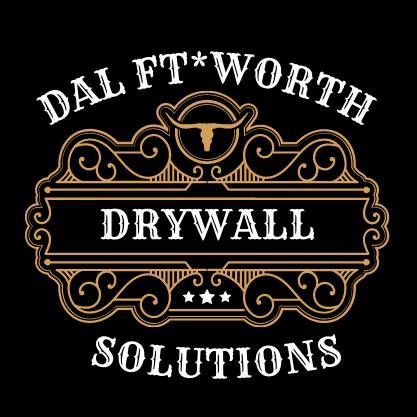Drywall & Sheetrock Taping Fort Worth, TX
Drywall Taping Process
No need to search drywall taping near me anymore, just follow this method. Once the drywall has been lined up in place and ready to go, it can be taped to the seams and joints. There are two main types of tape available for bonding drywall joints including paper and mesh.
The tape is then applied to the drywall seams and joints where the drywall panels are attached and may need to be applied in several layers for added protection. The tape is sealed in place to hold the panels together using another layer of protection with a mix of drywall. After setting to dry, the drywall is ready for the finishing touches.
The tape's primary component is an interlocking tape joint, which has been designed to be easy to install. It contains small pins that are all attached to a larger body. The tape's surface is covered with masking tape, which acts as a primer before the adhesive can bond to the drywall. The tape is pulled through the masking tape and the larger body is applied and pressed into the drywall.
There are several different types of tape for Drywall Taping. The two most common tape types are PT and Vinyl. Both varieties are strong enough to hold the joint together and provide a smooth surface for painting or staining. There are differences between the two tapes in their adhesives. Vinyl is stronger than PT.
Most tape joints have two components. The first is the tape joint, which is made of two pieces of tape, each approximately one inch in length. The second is the masking tape, which is peeled back from the tape joint. The peel is removed, the tape is re-pulled on each side of the joint, and the tape is trimmed to create a clean seam. The seams are typically taped together before
installation
to ensure even application.
When installing tape for Drywall Taping, it is important to pay attention to the direction of the tape's pattern. If the tape moves in a different direction than the drywall surface, it may not be installed properly and may not stay in place. Instead of trying to determine which direction the tape needs to be moved, it is best to consult a professional. As with any other type of joint, if the tape is not correctly laid it will not look right and may even fail to stay in place when placed down.
Some Drywall tape joints require extra care when removing the tape from the wall. Depending upon the type of tape, some solvents and some paints will react with certain tape materials. It is important to take care to remove the tape that has been adhered to the wall by means of a tacky substance such as caulk or adhesive. If any glue has been added to the tape, carefully remove it and place it carefully in a clean bowl or container. If a layer of adhesive has been added, carefully scrape it away from the wall and put it in a new container. Drywall tape is very easy to damage, so it is always best to be extra careful when removing it from the wall.
DIY Vs Professional Taping
Installing drywall taping is an easy job for most do-it-yourselfers. However, for detailed guidance on drywall taping techniques, check out our latest blog post. Drywall taping can also be applied by a do-it-yourselfer, but many do not have the experience to make the joint properly and they do not know how to use the various tools needed.
Hiring a
professional to install drywall taping is often the best way to go. For professional help,
give us a call and say goodbye to searches like "drywall taping near me".
Frequently Asked Questions About Drywall Taping
What is drywall taping?
Drywall taping is the process of covering the seams between drywall panels with tape and joint compound (mud) to create a smooth, even surface. This step is crucial to prepare the walls for painting or texturing and to hide any joints or imperfections.
What types of drywall tape are there?
There are three main types of drywall tape:
Paper tape: A common, inexpensive option that provides a strong bond but requires careful application to prevent bubbling.
Mesh tape: Made from fiberglass, mesh tape is self-adhesive and easier to apply, but it’s more prone to cracking if not covered with enough joint compound.
Fiberglass tape: A reinforced version of mesh tape designed for extra strength, often used in high-stress areas or for repairing cracks.
What causes bubbles or blisters in drywall tape?
Bubbles or blisters typically occur when too much or too little joint compound is applied beneath the tape, or when the compound isn’t evenly spread. It can also happen if the compound hasn’t been allowed to fully dry before applying additional layers.
How many coats of joint compound are needed when taping drywall?
Typically, three coats of joint compound are applied:
- The first coat embeds the tape.
- The second coat fills in gaps and smooths the seam.
- The third coat provides the final smooth finish, covering imperfections and feathering the edges.
How long should you wait between coats of joint compound?
It’s essential to wait for each coat of joint compound to dry completely before applying the next. Drying time varies depending on the type of compound used, but it typically takes 24 hours for each coat to dry under normal conditions. Drying time may be longer in humid environments.









